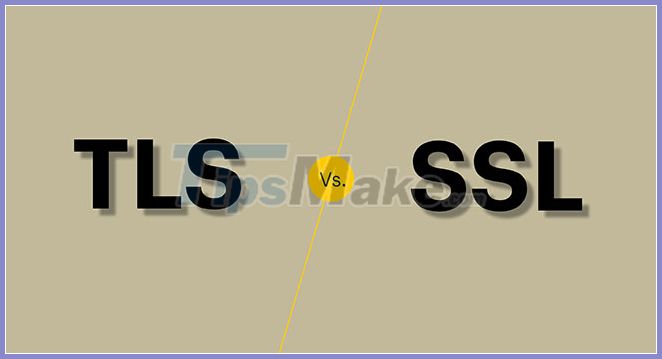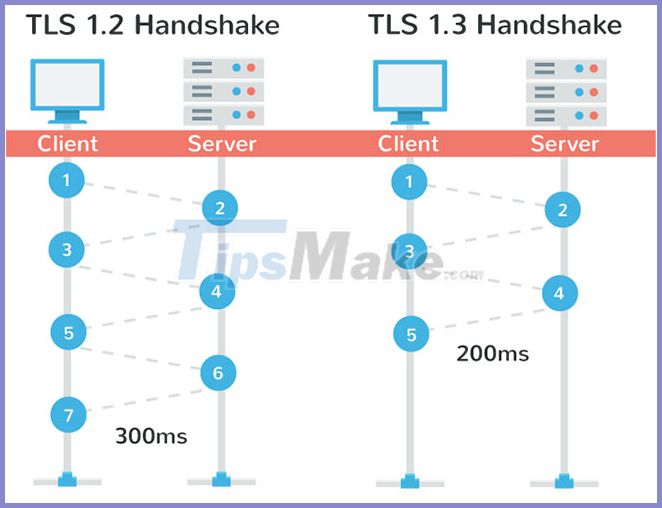Is TLS or SSL a better web encryption standard?
With so many big data breaches happening lately, you might be wondering how your data is protected while you're online. When you visit a website to shop and enter your credit card number, you hope in a few days a package will arrive at your doorstep. But at the moment before you hit the order button, have you wondered how online security works?
Online security basics
In its basic form, online security - security that takes place between a computer and a website - is done through a series of questions and answers. You enter a web address in your browser, then the browser asks the site to verify its authenticity. The website responds with the appropriate information, and after both parties agree, the website opens in a web browser.
Between the questions asked and the information exchanged are data about the type of encryption that transmits browser information, computer information, and personal information between the browser and the website. These questions and answers are called a handshake. If that handshake doesn't take place, the website you're trying to access is considered unsafe.
SSL and TLS
SSL
- Originally developed in 1995.
- Old web encryption level.
- Lags behind the fast growing Internet.
TLS
- Beginning is the third version of SSL.
- Short for Transport Layer Security.
- Continue to improve the encryption used in SSL.
- Added security fixes for new types of attacks and vulnerabilities.
SSL is the original security protocol that ensures that web pages and the data transferred between them are secure. According to GlobalSign, SSL was introduced in 1995 as version 2.0. The first version (1.0) was never put into the public domain. Version 2.0 was replaced by version 3.0 for a year to address the vulnerabilities in protocol.
In 1999, another version of SSL, called Transport Layer Security (TLS), was introduced to improve the speed of the conversation and the security of the handshake process. TLS is the version currently in use.

TLS encryption
Advantages
- Encryption is more secure.
- Hide data between computers and web pages.
- Make the handshake process better with encrypted communication.
Defect
- No coding is perfect.
- Does not automatically secure DNS.
- Not fully compatible with older versions.
TLS encryption was introduced to improve data security. Although SSL is a good technology, security changes at a rapid rate and that leads to the need for better, more up-to-date security. TLS is built upon the SSL framework with improvements to the communication governing algorithms and handshake.
What is the latest version of TLS?

Like SSL, TLS encryption continues to improve. The current version of TLS is 1.2, but TLSv1.3 has been drafted and some companies and browsers have adopted this security standard for a while. In most cases, they revert to TLSv1.2 because version 1.3 is still being finalized.
When finalized, TLSv1.3 will bring a number of security enhancements, including improved support for more existing encryption types. However, TLSv1.3 will also discontinue support for older versions of the SSL protocol and other security technologies that are no longer strong enough to ensure security, as well as appropriate encryption for data. personal.
You should read it
- How to encrypt email
- How to encrypt files on Google Drive with Syncrypto
- Automatically encrypt EFS in Windows XP, Vista or Windows 7
- How to encrypt Gmail, Outlook and other webmail
- Learn about AES (Advanced Encryption Standard)
- Outlook may not encrypt your email if you use S / MIME encryption
- How to encrypt text using the Text Encryption Tool
- How to use 7Zip to encrypt files and folders on Windows 10
May be interested
- Top 5 best USB encryption software
 all data needs to be secure - especially with a small usb, which can easily be lost or stolen.
all data needs to be secure - especially with a small usb, which can easily be lost or stolen. - What is Zero-Knowledge Encryption? Why use this type of encryption?
 data breaches are becoming more and more common, so it's essential that you know about the different ways you can protect your valuable information. zero-knowledge encryption is one of the methods that provides superior privacy and data protection.
data breaches are becoming more and more common, so it's essential that you know about the different ways you can protect your valuable information. zero-knowledge encryption is one of the methods that provides superior privacy and data protection. - How to encrypt files on Windows using Simple Encryptor
 simple encryptor is a file encryption application, content on windows is aes 256-bit standard.
simple encryptor is a file encryption application, content on windows is aes 256-bit standard. - Check email encryption process
 to facilitate this analysis, it is good to 'talk' directly to your smtp or imap server.
to facilitate this analysis, it is good to 'talk' directly to your smtp or imap server. - Everything you need to know about encryption on Zoog's free VPN
 zoog's free vpn service can give you enhanced online privacy and security, but what about its encryption standard? what encryption cipher does zoog use and is it secure enough for you to trust?
zoog's free vpn service can give you enhanced online privacy and security, but what about its encryption standard? what encryption cipher does zoog use and is it secure enough for you to trust? - Discover the difference between symmetric and asymmetric encryption
 there are two commonly implemented types of encryption: symmetric and asymmetric. the fundamental difference between the two types of encryption is that symmetric encryption uses a unique key for both encryption and decryption.
there are two commonly implemented types of encryption: symmetric and asymmetric. the fundamental difference between the two types of encryption is that symmetric encryption uses a unique key for both encryption and decryption. - Top 20 best encryption software for Windows
 in a pc, many of your personal information may be accessed illegally. that's because windows data is stored on the drive that is not encrypted or protected by encryption software so anyone can access your private and confidential information.
in a pc, many of your personal information may be accessed illegally. that's because windows data is stored on the drive that is not encrypted or protected by encryption software so anyone can access your private and confidential information. - What is data encryption? Things to know about data encryption
 data encryption is to transfer data to a new form that users cannot read and need to use the key to encrypt the data.
data encryption is to transfer data to a new form that users cannot read and need to use the key to encrypt the data. - The Encipher download offer, the file and text protection app on Win 10 costs $ 4.39, which is free
 if you want to protect, encrypt files and documents with password and recover via email, encipher with encryption algorithm aes 256-bit standard is the right choice for you. this application is only compatible with windows 10 and is priced at 4.39usd but is currently free until march 21, 2018.
if you want to protect, encrypt files and documents with password and recover via email, encipher with encryption algorithm aes 256-bit standard is the right choice for you. this application is only compatible with windows 10 and is priced at 4.39usd but is currently free until march 21, 2018. - File encryption software and privacy protection messages
 recently, reports have shown that technology spying is on the rise. therefore, it is necessary to protect your data and privacy with encryption software. the following article will introduce you to some great encryption software for windows, ios and android.
recently, reports have shown that technology spying is on the rise. therefore, it is necessary to protect your data and privacy with encryption software. the following article will introduce you to some great encryption software for windows, ios and android.










 Learn about Off-Page SEO techniques
Learn about Off-Page SEO techniques What is technical SEO?
What is technical SEO? 5 best free SEO courses available online
5 best free SEO courses available online How to create a sitemap for websites
How to create a sitemap for websites What is a crawl? What is index?
What is a crawl? What is index? What is a sitemap? The role of sitemaps in SEO
What is a sitemap? The role of sitemaps in SEO